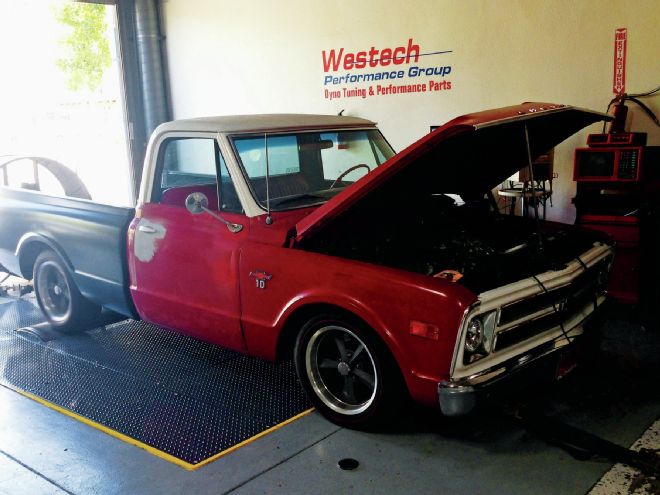
Like I've mentioned before, making big power with my LS327 crate engine wasn't what we intended when the project began. Originally, it was only going to be a carbureted mild street engine. A couple dress-up components perhaps and that was going to be the end of it. Then something happened. I'm not sure what exactly, but it turned into one of the biggest snowballs I've ever experienced when building a project. I think it all happened when I got the guys at TorqStorm involved. I approached them at the NSRA Street Rod Nats and, surprisingly, they were nice enough to listen to me talk about the Chevrolet C10 that we were building here at CT. Even more surprisingly, they answered my calls after the show when I called to bug them about being involved in our project. More surprising still, they continue to acknowledge my presence whenever I see them or send them an email, which, if you knew what I put them through over the course of the last year or so, would definitely surprise you!
That said, once I had the opportunity to add a supercharger to the mix, I knew we were going to have to take not only the engine, but the whole build to another level.
A passing conversation with Bill Tichenor at Holley revealed that they were getting ready to introduce a mid-rise intake manifold for LS engines that would solve the height clearance problems some of their customers had with their Hi-Ram intake. He mentioned that some of the C10 trucks have such an issue. I agreed. Then he told me that it would make a perfect intake in a supercharged application.
Again I had to agree. From that point on, it seemed as if our little project was growing out of our control.
I contacted Alan Rebescher at Summit Racing to discuss our options on how to help the little wheezy 5.3L Chevy to breathe a little easier and he referred us to a set of Trick Flow Gen X 205 cylinder heads. Fully CNC machined, these heads have an intake port volume of 205cc, which should keep the incoming charge moving nicely as it's forced past the 2-inch intake valve and out the 1.575-inch exhaust valve. Combine with a custom blower-grind cam from Comp Cams as well as all the necessary upgraded valvetrain components, our diminutive 327 was turning into quite the little performance package.
When it was all said and done, the component matchup turned out to be just what the doctor ordered, churning out over 500 horsepower to the rear wheels on Westech Performance's rolling chassis dyno. Color me impressed!
Though the end result of our LS327 is incredibly impressive, obviously there are other means to arrive at the same end. A small-block Chevy with a 6-71 blower could probably yield similar numbers. The difference lies in the fact that the LS package has proven to be reliable, even under high-horsepower situations. That old small-block? Not so much. Making that kind of power in a first-gen small-block Chevy would be asking an awful lot when it came to reliability, drivability, and longevity. The LS motors on the other hand, make such good power in stock guise that adding a cam, heads, and a decent intake can make an easy 500 horsepower without stressing the engine a bit.
With over 3,000 miles on the LS327 in my C10, I can honestly say that it runs and drives like a brand-new truck. Getting the same results from a small- or even big-block Chevy would mean that engine would be a fire-breathing monster, nowhere near capable of the 19 mpg I'm seeing out of the 5.3 liter LS. Making the same argument, but comparing apples to apples, one could order up a 454LSX from Chevrolet Performance that makes 620 horsepower right out of the box. But at $12,095 MSRP, you're nearing our entire budget and all you've got is a long-block engine. Add an intake and fuel system, front drive accessories, etc., and you could be looking at a 20-grand engine. That makes me pretty happy about what we achieved with the little engine that could.
What it Costs
Building a powerful engine is never cheap. As the saying goes, "how fast can you afford to go?" While we're covering a bunch of extracurricular components this month (transmission, rearend, etc.), I also wanted to cover the cost of the engine build alone so that you could see what it took to get our results. It's definitely not a $2,500 junkyard budget build, but you're probably not going to get 600-plus horsepower out of something from the wreckers either. Give and take, and all that.
LS327 (#19244096) $5,014.00
Trick Flow Gen X 205 cylinder heads (#TFS-3051B001-C00) $900.00
Holley Modular Mid-Rise Intake (#300-126) $647.95
Chevrolet Performance Parts 90mm throttle body (#12570790) $504.97
TorqStorm Billet Supercharger kit (ARP-K-GMLS-C10) $3,800.00
Viton valve seals (#511-16) $26.38
Valve stem locks (#623-16) $32.70
Spring seats (#4695-16) $35.46
7-degree tool steel retainers (#1717-16) $157.81
Hi-Tech pushrods (#7955-16) $146.43
Dual valve springs (#26925-16) $193.43
Hooker's LS Exhaust Manifolds (#8501-1HKR) $426.95
Holley Dominator EFI Vehicle Management System (#554-114) $1,970.95
Total: $14,357.03
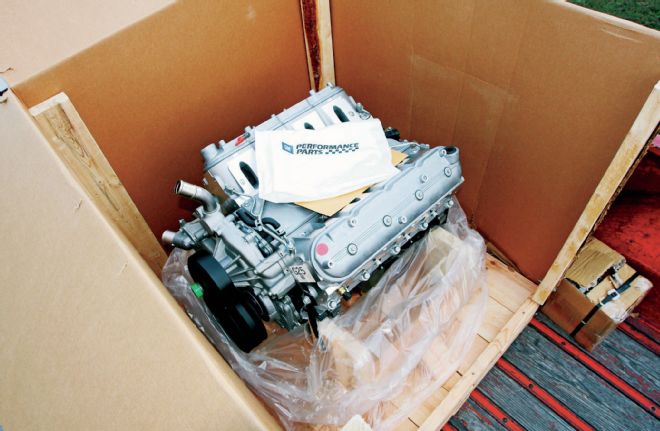
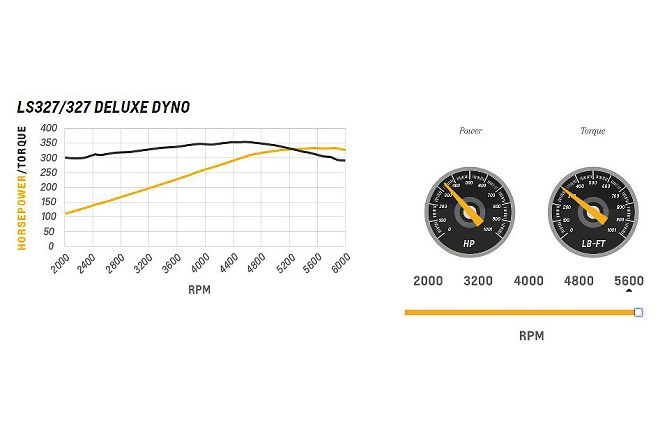
01 We're starting with a bone-stock Chevrolet Performance Parts LS327 (#19244096) crate engine as the basis for our project. With an advertised 327 horsepower and 347 lb-ft, this hot-cammed crate motor provides plenty of "go" for most truck guys, but we wanted to play with it a little bit. The iron engine block provides a strong foundation upon which to build a supercharged engine while keeping the cost down.
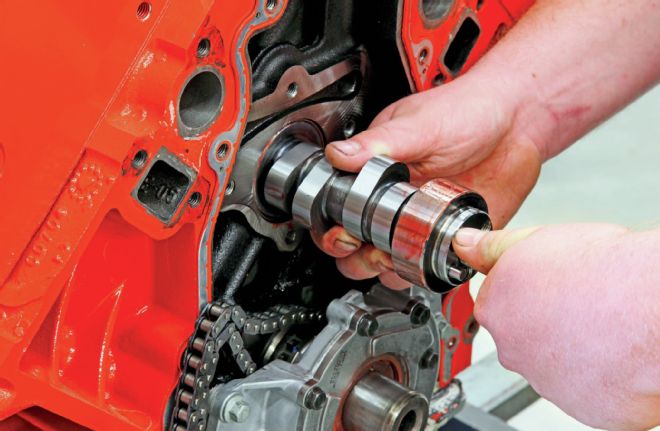
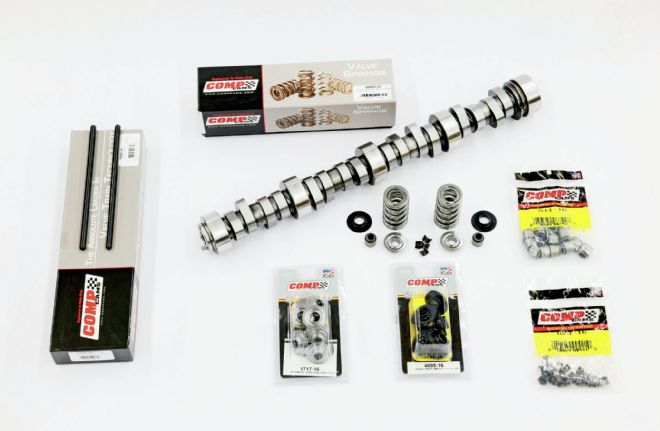
02-03 The first item we're going to swap out is the camshaft. Before we started tweaking the engine, we went to the guys at Comp Cams with our spec sheet in hand and they knocked out a blower cam with a custom grind specifically for our engine. Based on a 114-degree lobe separation for less overlap, we settled on 220/228-degree duration at 0.050-inch lift. For a normally aspirated setup, these specs are relatively mild, but compared to the LS327's stock cam specs of 196/201, it's quite an improvement. Since we're supercharging the engine, we aren't concerned with long valve timing or high lift as the motor won't be relying on vacuum signal alone to draw in the intake charge or to push out the spent gasses. In addition, we also ordered up new Viton valve seals (#511-16), valve stem locks (#623-16), spring seats (#4695-16), 7-degree tool steel retainers (#1717-16), Hi-Tech pushrods (#7955-16), and dual valve springs (#26925-16) to complete the valvetrain requirements.
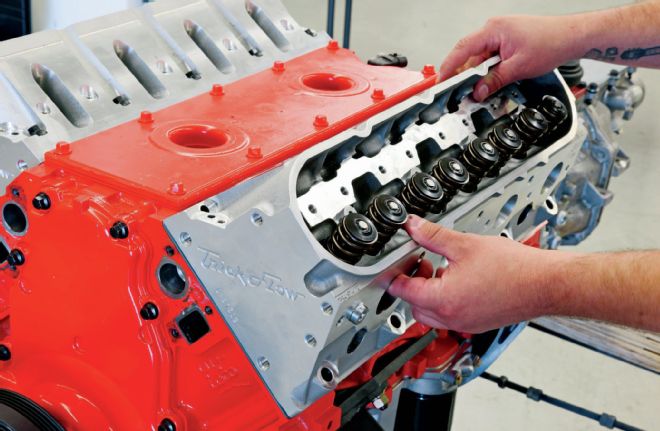
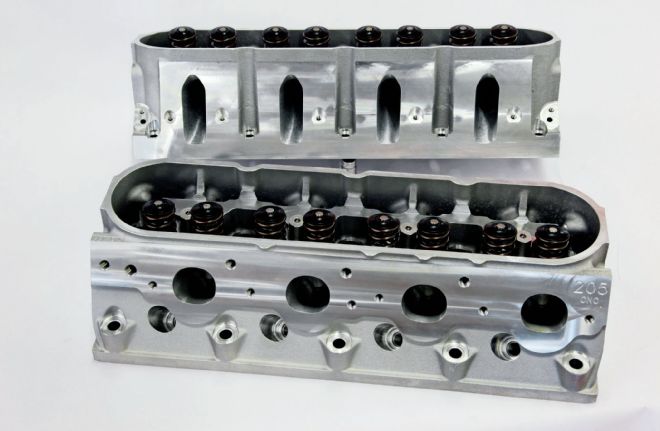
04-05 Blowing all that extra charge into a set of heads that can't handle it wouldn't do a lot of good, so for that end, we opted to upgrade the stock GM cylinder heads with a pair of Trick Flow GenX 205s (#TFS-3051B001-C00), courtesy of Summit Racing. While the chamber volumes on both sets of heads are identical at 58cc, the Trick Flow fully CNC-machined 205s have larger intake and exhaust valves (2.00- and 1.575-inch compared to 1.890- and 1.550-inch respectively) and feature an altered valve angle from 15- to 13.5-degrees that effectively decreases valve shrouding, increases mid-lift airflow, and improves rocker arm-to-valve cover clearance.
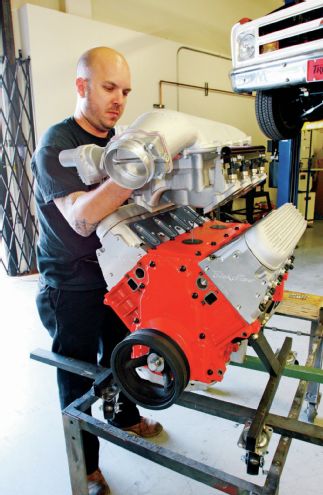
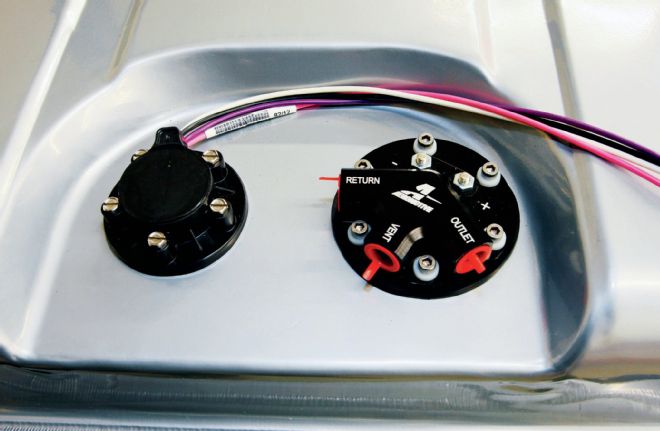
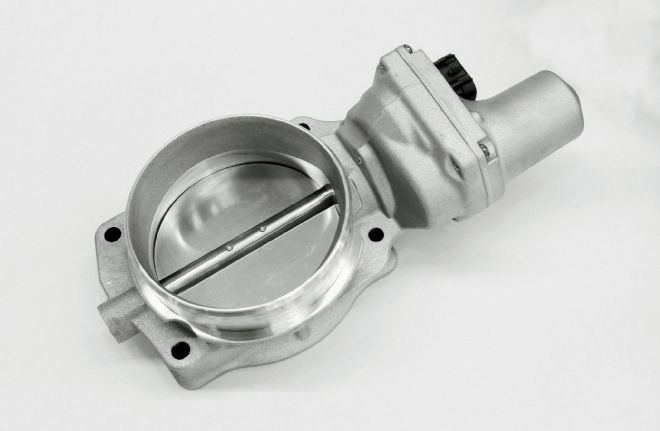
06-08 Of course a good induction system is of utmost importance when it comes to a supercharged application. Like I mentioned last month, we'll be using a Chevrolet Performance Parts 90mm throttle body (#12570790) to meter the air induction through the Holley Modular Mid-Rise Intake (#300-126). Based off the LS cathedral port mid-rise dual quad intake manifold, the mid-rise uses a purpose-built base adapter along with a Holley 92mm EFI plenum top, converting it to a perfect intake manifold setup for supercharged engines designed to operate in the 1,500-6,500 rpm range. Given the restricted hood clearance of our C10, the lower, mid-rise intake satisfies both form as well as function.
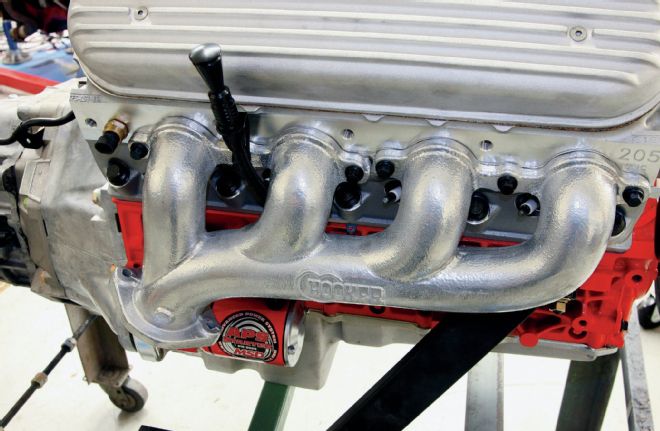
09 While a full-length set of tuned headers would be ideal, I didn't want to wrestle with the ground clearance issues that can arise with said setup and I'm just not a fan of their "tinny" characteristics. Instead, I opted for the more muffled sound that only a set of cast-iron manifolds can provide, while sacrificing a few ponies. Thankfully, Hooker's LS exhaust manifolds (#8501-1HKR) feature four smooth 15⁄8-inch primary tubes that exit a 21⁄4-inch collector, minimizing any resistance. The silver ceramic finish helps reduce engine compartment temperatures and ensures the manifolds look as good as the rest of the engine.
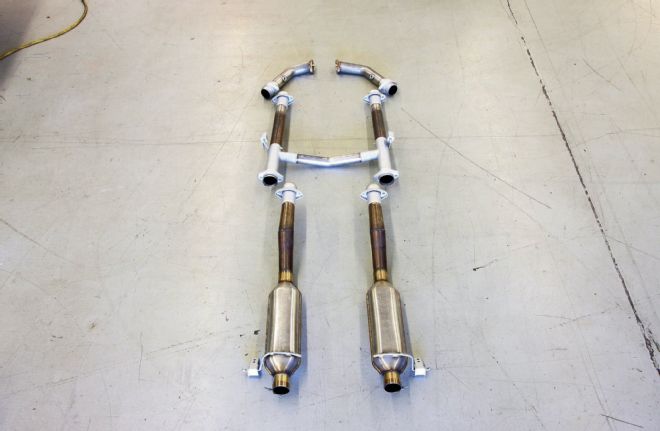
10 Kickin' out the gas is a custom stainless exhaust system blowing through Flowmaster T409 stainless Super HP-2 mufflers (#12418409). I really like the sound of these compact mufflers; almost no drone and a nice, mellow tone. Note the O2 bungs on each of the collector extensions as well as the crossover H-pipe. This reduces drone and backpressure so your LS-powered truck doesn't sound like a six-banger-powered lowrider.
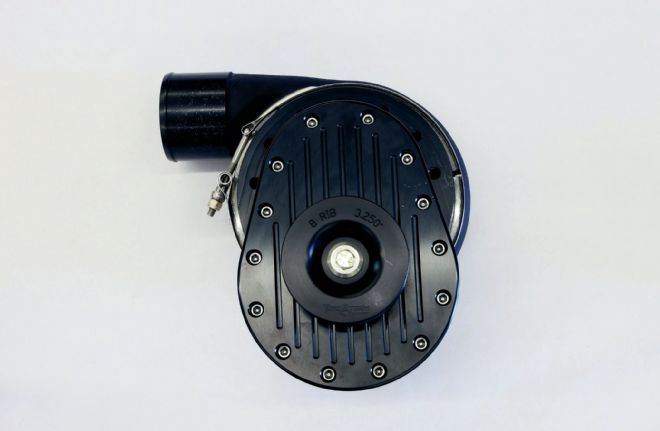
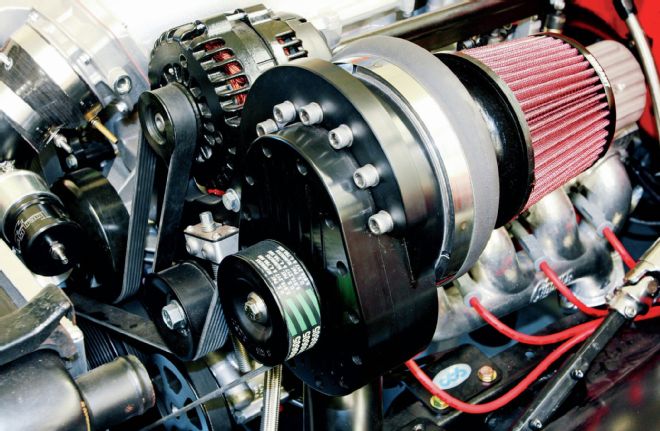
11-12 The pièce de résistance is the TorqStorm Billet Supercharger kit (ARP-K-GMLS-C10). The gear-driven centrifugal design is supported by self-lubricated ceramic bearings for a bulletproof design. Cut on a five-axis CNC mill, the billet impeller is the secret to the TorqStorm's success. Using a scroll and impeller design, the supercharger is capable of moving enough air to support over 600 horsepower. More like a turbo with a V-band flange than a typical centrifugal supercharger, the scroll can be rotated or indexed, making it extremely flexible. Boost, while dictated by the inlet tract's actual volume, can be adjusted by changing out the eight-rib serpentine pulley attached to the front of the supercharger. The smaller the pulley, the faster the blower spins, and the more boost created. The TorqStorm kit came with everything we needed to not only mount the centrifugal supercharger, but the alternator, A/C compressor, power steering pump, and necessary idlers as well. A crank pulley, blow-off valve, and serpentine drive belts were also included.
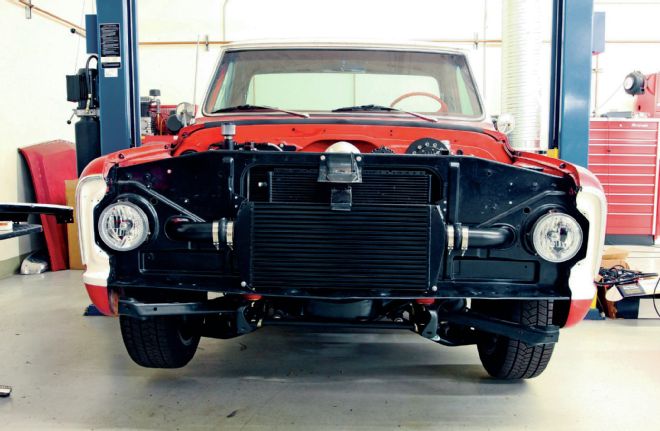
13 Speaking of inlet tract volume, adding an intercooler is usually known to drop actual boost levels by as much as 1 psi due to the added volume. Since we expected to keep the boost relatively tame on our street engine, we opted to add a Vibrant Performance aluminum intercooler to help cool the incoming air, making up for any loss in boost by reducing the blower's pulley diameter.

14 When we relocated the fuel tank, we installed an Aeromotive '69 Camaro fuel tank (#18658) complete with a 340 Stealth electric fuel pump, which will feed our LS327 setup via 8-AN lines, while 6-AN lines are plumbed in the return circuit.
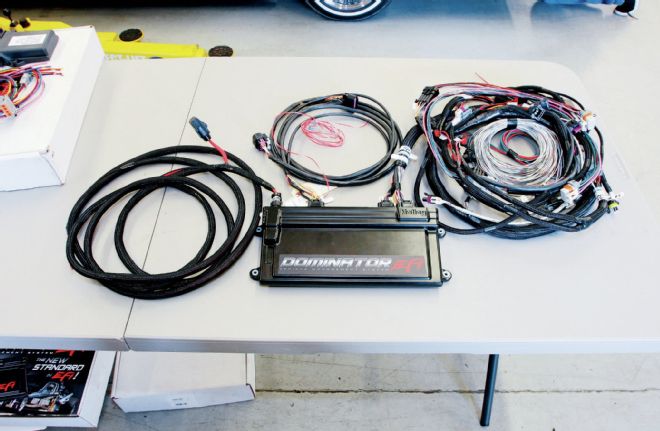
15 Controlling the fuel, air, and spark, among a myriad of other things is a Holley Dominator EFI Vehicle Management System (#554-114). Controlling the fuel system, ignition, drive-by-wire throttle, and electric fans are just the tip of the iceberg of the Dominator's capabilities.
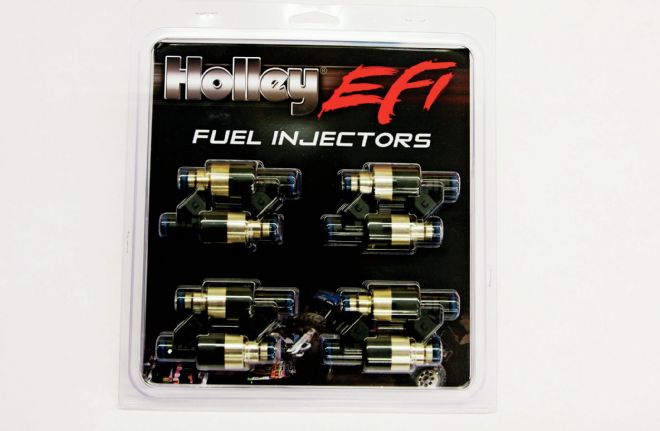
16 For our initial dyno session, we used eight Holley 42 lb/hr (#522-428) fuel injectors. These proved to be too small for our setup, as the duty cycle of the units were soon maxed out before the engine ran out of steam. Upgrading to 66 lb/hr injectors (#522-668) cured this problem and allowed us to make a handful of good passes on the Westech dyno.
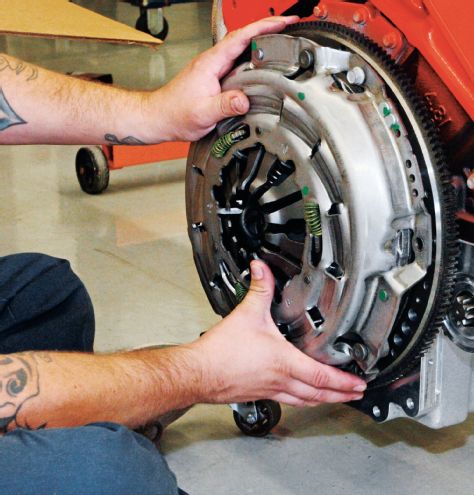
17 A high-horsepower engine is useless unless you can reliably put the ponies to the pavement. To do so in our project, Hurst Driveline Conversions provided us with a kit to drop in a Tremec T-56 Magnum trans. A new LUK heavy-duty 111⁄2-inch clutch and pressure plate, capable of handling over 600 horsepower...
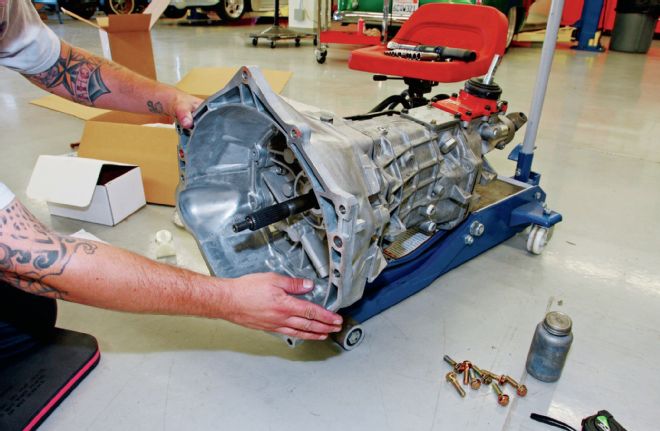
18 ...mated to a Tremec T-56 Magnum transmission. This is the aftermarket version of the TR-6060 transmission found in the ZR1 Corvette and ACR Viper, capable of withstanding 700 lb-ft of torque, while providing unbelievably crisp shifts.
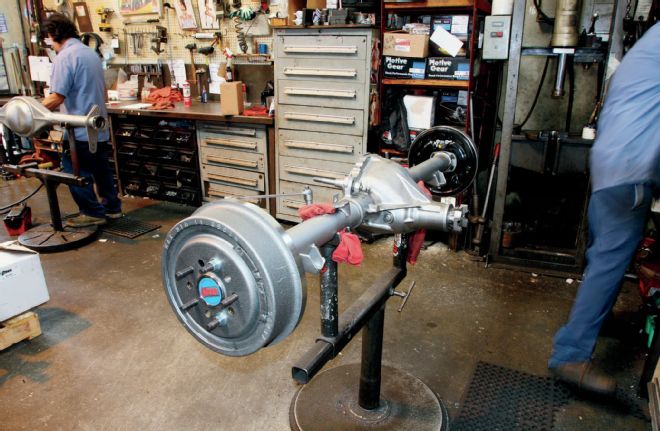
19 While the stock 12-bolt rearend is pretty strong, we went to Currie Enterprises and had a few of the weak points sorted out, namely the axle C-clips, so that our rearend could handle the power our LS was about to throw at it.
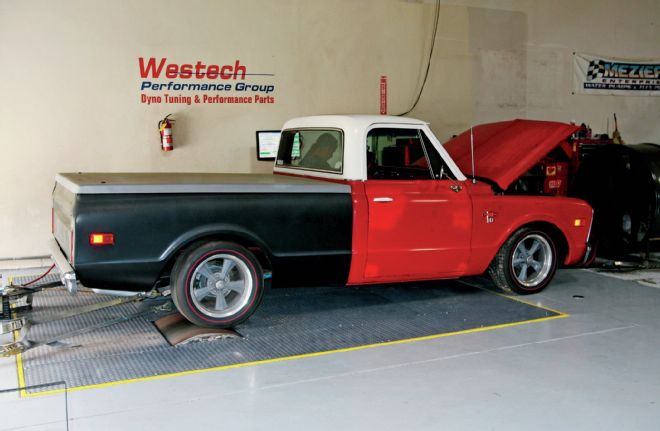
01 It would be a disservice (and a lie!) to tell you guys that we made mega-power numbers the first time out. In all honesty, we only made 497 hp and 468.4 lb-ft during the first dyno session at Westech Performance Group. Subsequent attempts that same day to make more power resulted in a total loss of boost reading at the dyno computer. The culprit turned out to be the crank pulley, which decided to part ways with the crank. The good news was I forgot to pin the TorqStorm crank pulley to the crank snout (I pinned an ATI damper that was part of a separate install that we replaced) and the pulley simply slid off the crank snout after the bolt backed out (apparently I didn't use any Loctite either!). Interesting to say the least and a potential catastrophe eluded. This was also the same session in which we realized we were maxing out the duty cycle of the 42 lb/hr fuel injectors.
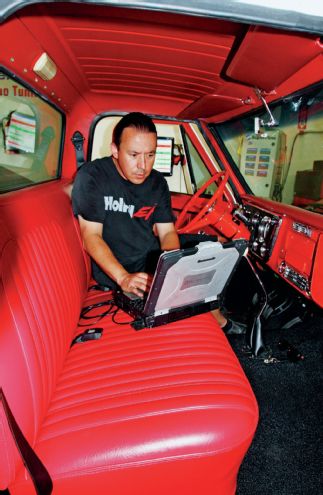
02 Returning to Westech's rolling chassis dyno for session number two, not only did we have the crank pulley pinned to keep it from spinning, we also had larger 66 lb/hr injectors installed, as well as a handful of different-sized pulleys for the TorqStorm supercharger. With tuner extraordinaire Eric Rhee at the helm, we proceeded to perfect the already dialed-in tune on the Holley Dominator system before finally putting the screws to the little LS.
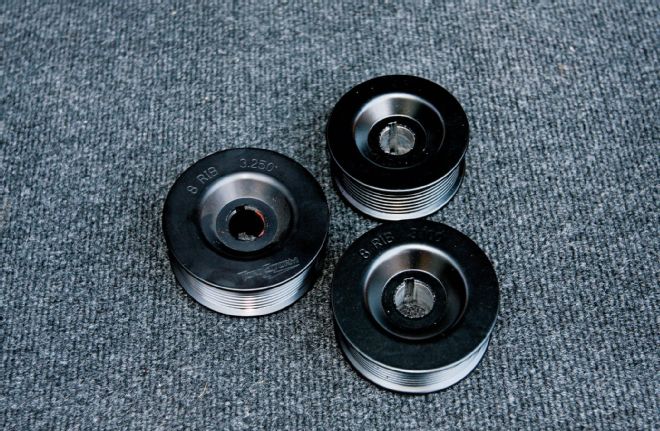
03 Here are the three pulleys that we used on the TorqStorm supercharger during testing: 2.900-, 3.100-, and 3.250-inch. Our initial test was conducted using the 3.250-inch pulley and yielded the 497hp number. Swinging for the fences and with the larger injectors installed, we dropped in the 2.900-inch pulley and made a pull. The results were very good, but we were headed for trouble as the engine was making 9 psi of boost at only 4,000 rpm. As this was our goal boost number at around 6,500 rpm, we knew this pulley was too small and that the results could be catastrophic.
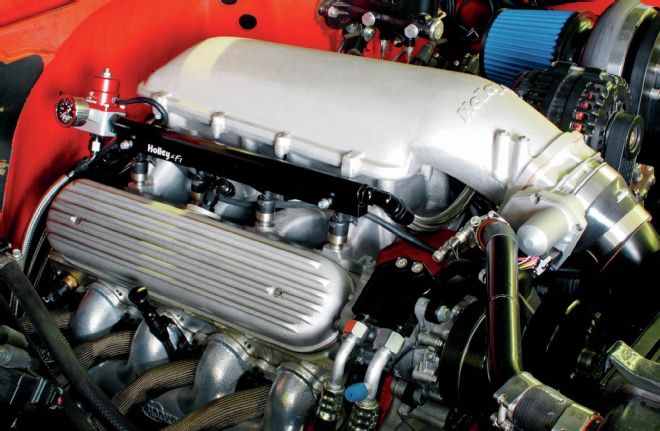
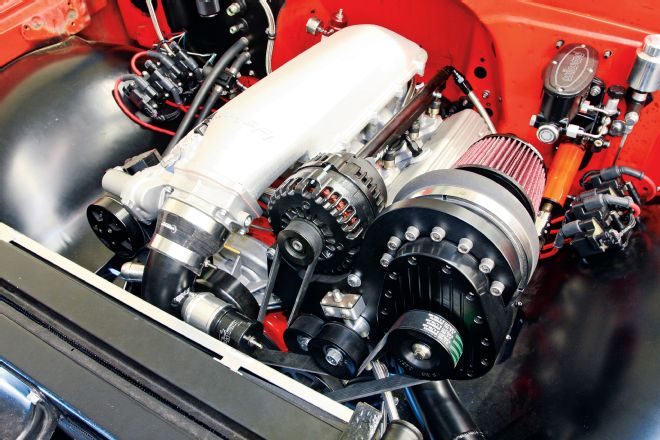
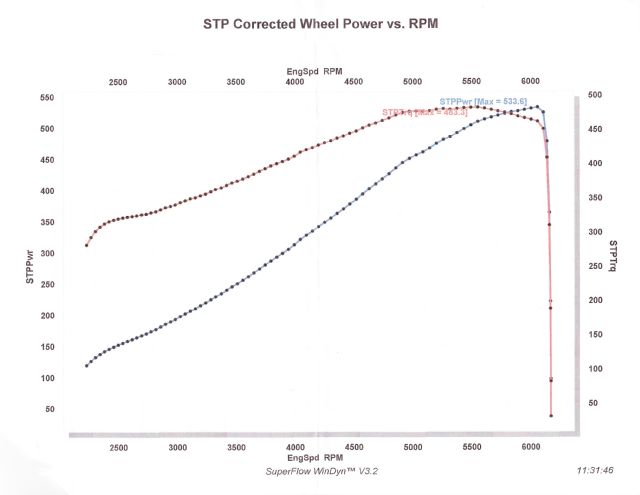
04-06 Swapping out the 2.900-inch pulley for the 3.100-inch number proved to be just what the doctor ordered. While Eric rolled on the throttle, the diminutive 327ci motor roared out over 533 horsepower and 483 lb-ft at the rear wheels. Calculated to crankshaft power, that's nearly double the output of the original LS327; not bad for a few additions.